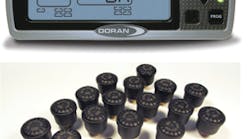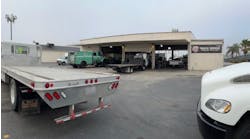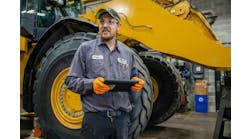It is common knowledge in the trucking industry that maintaining proper tire pressures will help to optimize tire life and can have a positive impact on fuel economy. However, with more fleets adopting and installing tire pressure monitoring systems (TPMS) on trucks and trailers, some of the hidden benefits associated with monitoring and maintaining tire pressures based on tire manufacturers' recommended pressures have started to be revealed.
This exposure is delivering unanticipated cost savings to fleets and is generating a positive impact to the bottom line.
Through Doran's field trials and implementation of the 360 TPMS with a wide variety of fleets across the country, we have been exposed to four "hidden" benefits related to tire pressure monitoring systems.
1. Reduction in Road Side Tire Calls
It is quite obvious that pre-trip inspections can identify a tire that has low pressure so that it can be addressed appropriately before starting the trip. Consistently maintaining proper tire inflation pressures minimizes side wall flexing and uneven tread wear that can lead to a catastrophic tire failure.
When the truck ignition is turned on, the driver can immediately see the current tire pressure in each wheel location and any tire experiencing a low pressure event can be addressed following the fleet's recommended procedures.
In addition to receiving digital tire pressure updates, utilizing a tire pressure monitoring system allows the driver to have access to real-time low pressure related alarms while on the road. A majority of the fleets that Doran has worked with have indicated that providing drivers with a visual and audible alert when a tire falls below a low pressure threshold has helped them to reduce costly delays and expensive road side tire calls from tire blow outs.
In situations where road debris punctures a tire, the Doran 360 TPMS also has a unique FastLeak alarm that provides an additional level of early warning protection when tire pressure rapidly falls by 2.8 psi in less than 12 seconds.
2. Saved Casings
Fleets that have implemented TPMS have improved the overall condition of their tire casings and significantly increased the number of these casings that can be used in retreads. This provides another opportunity to reduce and control tire costs.
3. Improved Driver Awareness and Safety
By providing continuous real-time tire pressure data and alarms for low pressure, drivers become more aware of the issues associated with driving on underinflated tires.
Despite a sometimes hesitant "big brother" initial response from drivers to the acceptance of another monitoring/performance device on the truck, a large percentage of Doran's fleet customers and their drivers have experienced a high satisfaction level with the 360 TPMS and an overall sense of driving a safer vehicle with properly inflated tires.
4. Decrease in Excessive Heat Issues
Another side benefit of tire pressure monitoring is the capability to transmit temperature data and alarms. "High temperature" alarms can identify a tire that is overheating, a hanging break, seized bearing or other wheel-end problems.
The stand-alone 360 TPMS includes a high temperature alarm triggered when air temperature reaches 175 degrees F. Telematics providers that have integrated with tire pressure monitoring systems often offer a high temperature alarm as well.
Costs Reductions
Overall, fleet acceptance related to the positive impact of tire pressure monitoring systems has shown a gradual increase over time and has gained momentum over the past 12 months.
The fundamental technology of transmitting accurate tire pressure data and reliable alarms through in-cab displays has been proven. Using integration projects with a number of mobile communications/telematics providers via J1939, J1708 or RS232 data protocol, fleets now have the opportunity to receive tire pressure data and alerts that can be transmitted off the truck to provide additional support for their drivers.
The low-pressure event can be date/time stamped and marked with a GPS location to help the driver find a proper facility to have the tire serviced. The pressure and temperature data can also be used for analysis and improving tire inflation maintenance practices.
Ultimately, both the understood and hidden benefits associated with implementing tire pressure monitoring systems are making a real difference in reducing tire related repair and maintenance costs for a significant number of fleets across the country.



